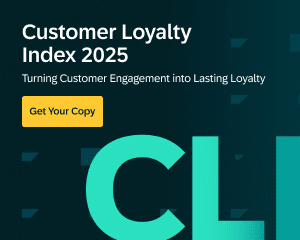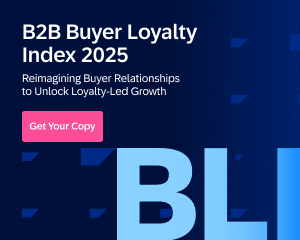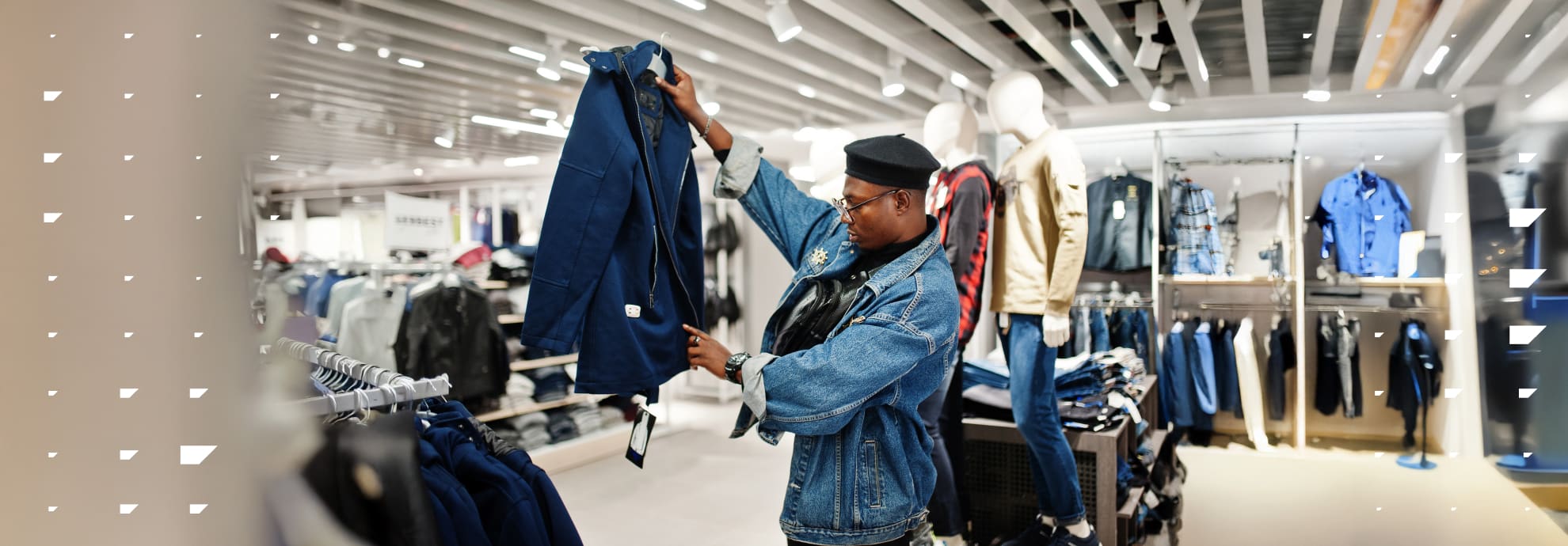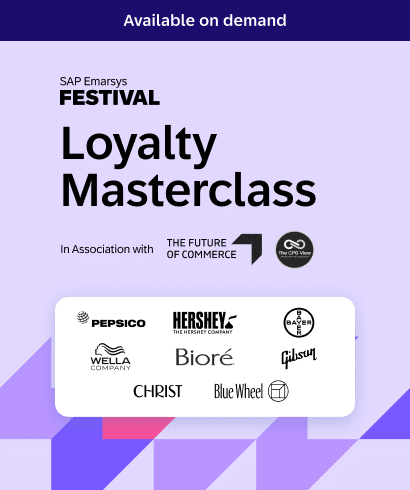In today’s competitive market, customer loyalty is more important than ever. With rising acquisition costs and evolving consumer behaviors, businesses need to focus on building lasting relationships with their customers.
From the power of loyalty programs to the growing influence of ethical and personalized marketing, this article compiles essential customer loyalty statistics that will help your brand navigate 2026 and beyond.
Customer Loyalty Trends
These statistics focus on broad trends in customer loyalty, highlighting shifts in consumer behavior and loyalty to different types of brands.
In the last five years, customer acquisition costs have increased nearly 60%, and today’s merchants, on average, now lose $29 for every new customer acquired. [Business Wire]
As acquiring new customers becomes more expensive, businesses face greater pressure to optimize acquisition strategies, as these rising costs eat into profits.
68% of consumers are still loyal to certain brands in 2025 [SAP Emarsys]

Even with rising costs and endless choice, more than two-thirds of consumers say they remain loyal to specific brands. However, this figure reflects a return to 2021 levels, highlighting just how fragile loyalty has become as switching gets easier and expectations continue to rise.
True Loyalty has declined for the first time in five years, dropping 5% from 2024 to 29% in 2025 [SAP Emarsys]
True loyalty — the deep, trust-based connection that brands aspire to — has taken a hit. After years of steady growth, it fell to 29% in 2025, a 5% drop from 2024. This shift reflects how fragile brand devotion has become in an era of endless choice, rising costs, and viral-driven alternatives.
27% of consumers are loyal to brands for ethical reasons [SAP Emarsys]
Ethical loyalty — when customers stay committed because a brand aligns with their values — has slipped slightly in 2025, down to 27% from 30% in 2024. While sustainability and social responsibility still matter, this dip suggests that consumers are weighing ethics alongside cost, quality, and convenience more than ever.
54% of customers are loyal to clothing & fashion brands [SAP Emarsys]
The clothing and fashion industry leads customer loyalty, with 54% of respondents expressing loyalty to brands in this sector. This is up from 47% in 2023, showcasing the role of personalization and consistent brand identity in fashion loyalty.
53% of consumers exhibit Silent Loyalty in 2025 [SAP Emarsys]
53% of respondents are classified as silent loyalists, meaning they remain loyal to brands without actively engaging with them. While they don’t vocalize their loyalty, these customers are consistent buyers, and brands should create strategies to engage them further.
The Rise of Trend Loyalty
Customer loyalty isn’t only about long-term trust anymore. In 2025, a new kind of loyalty has emerged, one that’s fast, emotional, and often short-lived. Social media and cultural buzz now play a defining role in how consumers choose and switch brands.

14% of consumers are now considered Trend Loyal [SAP Emarsys]
This group buys into what’s popular in the moment — from TikTok product reviews to viral drops — but their attachment fades quickly. In fact, 29% of consumers lose interest as soon as a product stops trending, while 15% admit to purchasing items purely because they were going viral. Trend Loyalty highlights the need for brands to move fast, stay relevant, and turn fleeting attention into lasting relationships through personalized engagement.
15% of consumers buy products purely because they’re trending on TikTok [SAP Emarsys]
Viral content has become a powerful purchase driver. For one in seven consumers, simply seeing a product go viral on TikTok is enough to trigger a purchase, regardless of whether they actually need it.
29% quickly lose interest once a product stops trending [SAP Emarsys]
The same forces that create loyalty can just as quickly undermine it. Almost a third of consumers say they abandon products once the online buzz disappears, even if they were initially enthusiastic.
20% feel emotionally connected to products just because they’re trending [SAP Emarsys]
Emotional resonance isn’t always built over time. One in five consumers feels a connection to trending products purely because they’re popular, showing how loyalty can be influenced by cultural moments as much as by brand relationships.
How Consumers Show Loyalty
In 2025, loyalty is expressed through a mix of frequent shopping, advocacy, and digital engagement. These behaviors show how customers translate brand affinity into action.
63% shop with their favorite brands frequently [SAP Emarsys]
The most common sign of loyalty is repeat purchasing. Nearly two-thirds of consumers demonstrate their commitment by shopping regularly with brands they trust.
48% recommend them to friends and family [SAP Emarsys]
Word of mouth remains a powerful loyalty indicator. Almost half of consumers say they show loyalty by recommending brands to others, extending the relationship beyond personal purchases.

41% use loyalty cards or schemes [SAP Emarsys]
Loyalty programs continue to matter. More than four in ten consumers say they express loyalty by using points, discounts, or other incentive schemes.
36% show loyalty by installing a brand’s app [SAP Emarsys]
For many, loyalty extends to mobile. Over a third of consumers keep their favorite brand’s app on their phone, signaling trust and ongoing intent to engage.
22% demonstrate it by following brands they’re loyal to on social media [SAP Emarsys]
Even outside the checkout, loyalty shows up in digital spaces. More than one in five consumers say they prove loyalty by following their favorite brands on social channels.
Customer Expectations in Return for Loyalty
Earning loyalty in 2025 means giving customers clear value in return. Discounts and incentives still matter, but seamless experiences and personalized offers are becoming just as important. At the same time, cost pressures are forcing many consumers to reconsider how loyal they can afford to be.
55% expect reduced prices or better deals [SAP Emarsys]
More than half of consumers now see lower prices as the foundation of loyalty. Without competitive offers, many will look elsewhere.
50% want loyalty points or cashback [SAP Emarsys]
Rewards remain a core motivator. Half of consumers expect points or cashback in exchange for their ongoing loyalty, making well-designed programs essential.
28% want seamless experiences every time they interact with a brand [SAP Emarsys]
Beyond rewards, customers want consistency. Over a quarter say friction-free interactions across all touchpoints are a key reason to stay loyal.

24% are more loyal to brands offering the best personalized deals [SAP Emarsys]
Personalization is becoming a loyalty differentiator. Nearly one in four consumers say they stay more loyal to brands that tailor offers directly to their needs.
24% also say they can no longer afford to be loyal [SAP Emarsys]
For many shoppers, cost trumps heritage. Rising prices mean a quarter of consumers simply can’t justify long-term brand loyalty — unless the value exchange is clear.
Generational Loyalty
Loyalty isn’t the same across every age group. In 2025, younger consumers show loyalty through digital channels and values-driven choices, while older generations continue to prize product quality and frequency of purchase. These differences highlight the need for brands to personalize loyalty strategies by generation.
70% of Gen Z say they’re loyal to a brand they love and trust [SAP Emarsys]
For Gen Z, loyalty is rooted in emotional connection. Seven in ten report strong brand loyalty when they feel understood and aligned with a brand’s values.
21% of Gen Z will pay more for products to show loyalty [SAP Emarsys]
Price isn’t always the deciding factor. One in five Gen Z consumers are willing to spend extra to demonstrate their commitment to a brand.
39% of Gen Z have switched brands over poor sustainability practices [SAP Emarsys]
Sustainability continues to be a deal-breaker for younger consumers. Nearly four in ten Gen Z shoppers have abandoned a brand when its environmental or social practices didn’t meet expectations. For this generation, loyalty isn’t just emotional — it’s conditional on brands proving their responsibility.
42% of Millennials show loyalty by installing a brand’s app [SAP Emarsys]
For Millennials, digital touchpoints remain a loyalty marker. More than four in ten express brand commitment through mobile apps, connecting loyalty directly to convenience.
65% of Boomers and 72% of Gen X show loyalty through purchase frequency [SAP Emarsys]
Older generations continue to equate loyalty with repeat shopping. For Gen X and Boomers, consistent purchases remain the strongest signal of brand commitment.
Disruptors of Loyalty
Just as certain experiences strengthen customer relationships, others can quickly erode them. In 2025, loyalty is fragile, with quality, price, and service emerging as the biggest risks. Poor use of data and misleading advertising also undermine trust, showing that loyalty is not just won by offers but protected through consistent integrity.
54% say lower product quality weakens their loyalty [SAP Emarsys]
Product quality remains non-negotiable. More than half of consumers will lose loyalty if they feel standards have dropped, even slightly.
49% say price increases damage loyalty [SAP Emarsys]
Rising costs are a top concern. Nearly half of consumers say price hikes make them reconsider their brand loyalty, with many switching to cheaper alternatives.
47% cite poor customer service as a loyalty breaker [SAP Emarsys]
Bad experiences with service are among the fastest ways to lose a customer. Almost half of consumers say poor support directly impacts whether they remain loyal.

34% lose loyalty when brands use data irresponsibly [SAP Emarsys]
Trust is central to long-term loyalty. Over a third of consumers say they will withdraw loyalty if brands misuse or mishandle their personal data, up from 30% in 2024.
32% say misleading advertising undermines their loyalty [SAP Emarsys]
Loyalty is also tied to honesty. Nearly one in three consumers lose faith when brands make claims that don’t match reality, signaling the importance of transparency in every interaction.
Factors Influencing Customer Loyalty
This section includes statistics related to the specific drivers and behaviors influencing customer loyalty.
18% of consumers use subscriptions to show loyalty [SAP Emarsys]
18% of respondents subscribe to a brand’s products or services to show loyalty, reflecting the increasing popularity of subscription models. Brands in beauty, fashion, and tech can leverage this model to create consistent customer touchpoints and foster long-term relationships.
60% of consumers switch brands due to cost [SAP Emarsys]
60% of consumers switched from a brand they were loyal to because of cost considerations in 2025. As price sensitivity remains high, brands must balance competitive pricing with product quality to retain loyalty.

59% of customers cite high-quality products as a driver of loyalty [SAP Emarsys]
59% of consumers cite high-quality products as the top driver of their brand loyalty. Brands focusing on maintaining and improving product quality are better positioned to sustain long-term customer relationships.
The Role of Loyalty Programs
Statistics here relate to the impact of loyalty programs on consumer behavior and spending patterns.
41% of consumers use loyalty cards or programs [SAP Emarsys]
Nearly half of consumers in 2025 reported involvement in a loyalty scheme in one way or another. Consumers are drawn to personalized rewards and incentives, highlighting the importance of creating loyalty programs that offer meaningful, relevant benefits.
76% of consumers use brand apps more often when offered rewards or incentives [SAP Emarsys]
Over ¾ of consumers use brand apps more frequently if offered incentives such as discounts, personalized offers, or loyalty rewards. Brands should focus on integrating incentives into their mobile platforms to encourage app usage and long-term engagement.
48% of consumers exhibit incentivized loyalty in 2025 [SAP Emarsys]
48% of consumers display incentivized loyalty, meaning they remain loyal to a brand because of the discounts, perks, or rewards offered through the app. Brands with strong mobile platforms that offer exclusive incentives are more likely to see higher loyalty.

Loyalty programs drive 83% of consumers to make repeat purchases. [Yotpo]
Loyalty programs encourage customers to return to a brand, proving their importance for customer retention. While they can be make-or-break, a well-structured loyalty program can effectively incentivize repeat purchases, making it a powerful diver of retention.
90% of loyalty program owners see positive returns, averaging 4.8 times their investment. [Antavo]
When executed correctly, loyalty programs deliver a strong return on investment, with the majority of program owners experiencing substantial gains. This statistic shows that loyalty programs can be highly profitable, providing an average return of 4.8x the initial investment, making them a worthwhile business strategy.
73% of consumers will adjust their spending in order to get more benefits from a loyalty program. [Bondbl]
Many consumers strategically modify their spending habits to take full advantage of loyalty programs, benefiting both brand and customer. This goes to show the importance of offering valuable rewards, as they influence purchasing decisions and encourage higher order values.
90% of loyalty programs are planned to be refreshed in the next 3 years. [Antavo]
As consumer expectations evolve, brands recognize the need to update and enhance their loyalty programs. Most companies plan to make significant changes to stay competitive and meet customer demands, emphasizing the dynamic nature of loyalty strategies.
Spending Behavior and Customer Retention
These statistics highlight the spending behaviors of loyal customers and the importance of retaining existing customers.

28% of consumers cite consistent branding as an important factor in their loyalty [SAP Emarsys]
For 28% of customers, consistent branding across all channels is an important factor in their loyalty. Ensuring that your brand’s message, tone, and visuals are cohesive across digital and physical spaces can help foster a stronger connection with your audience.
36% of consumers switch brands due to their mobile experience [SAP Emarsys]
A poor mobile experience causes 36% of consumers to switch brands. Ensuring that your mobile platform is optimized, user-friendly, and personalized can help prevent churn and encourage greater loyalty.
Current customers spend 67% more on average than those who are new to a business. [Business.com]
Long-term customers bring significantly higher revenue, making it crucial for businesses to focus on retaining their existing base rather than constantly pursuing new customers.
Increasing customer retention rates by 5% increases profits by 25% to 95%. [Bain & Company]
Small improvements in customer retention rates can yield substantial profit growth, underscoring the financial impact of loyalty and retention efforts.
Loyal customers are 64% more likely to purchase more frequently and 31% are more willing to pay a higher price. [McKinsey]
Loyalty drives both frequency and willingness to pay more, making loyal customers highly valuable for long-term, sustainable revenue growth.
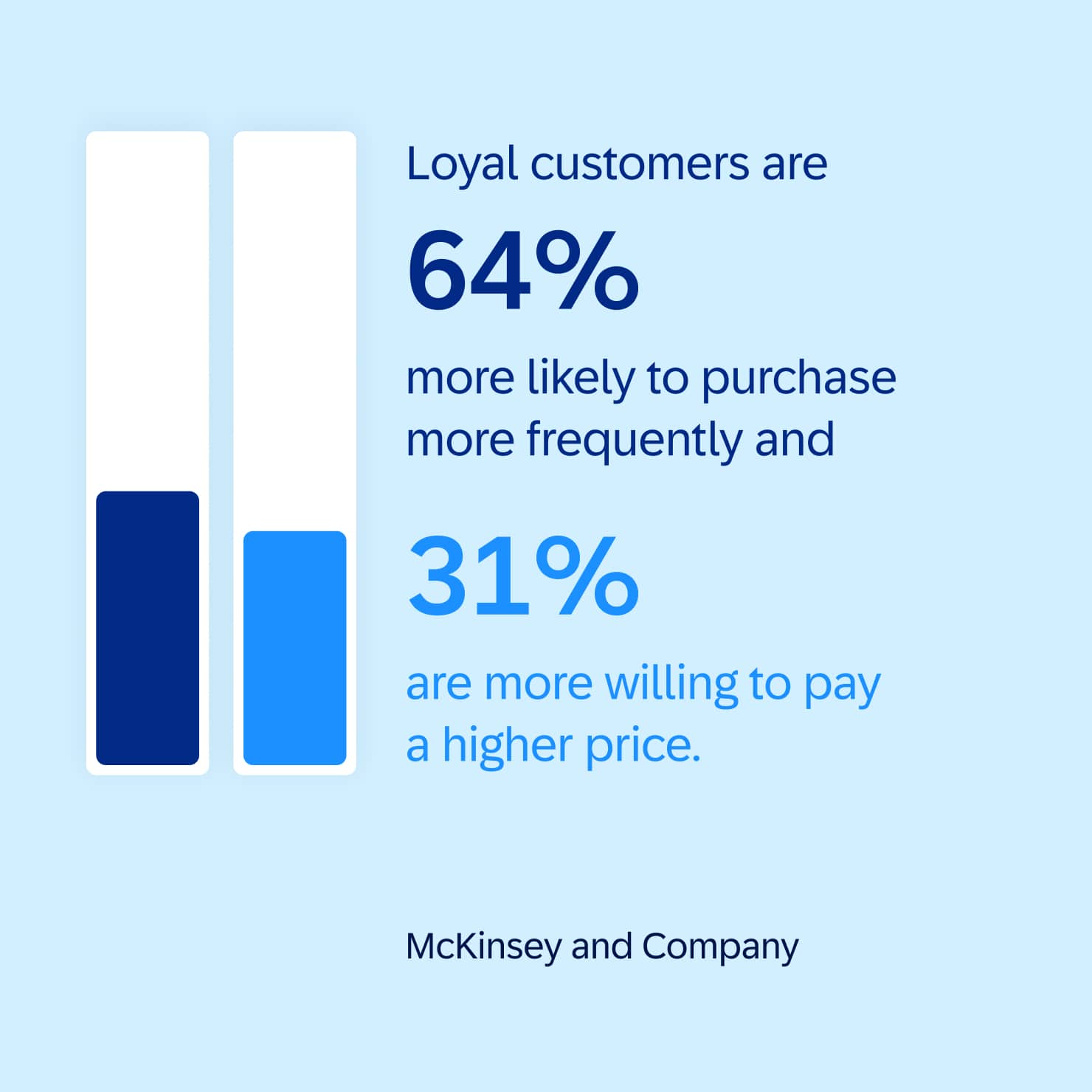
Customer-Centric and Omnichannel Strategies
These statistics focus on the benefits of omnichannel and customer-focused approaches for driving loyalty and increasing margins.
54% of customer-obsessed companies experience better customer loyalty and improved retention from omnichannel efforts across the customer lifecycle. [SAP Emarsys]
By delivering consistent, personalized experiences across multiple channels, these companies effectively enhance customer loyalty and retention rates.
62% of these customer-obsessed companies experienced higher margins. [SAP Emarsys]
Focusing on customer satisfaction not only boosts loyalty but also improves profitability, as satisfied customers are more likely to engage in repeat business.
88% of customers who trust a store will return as a repeat buyer. (Deloitte)
Trust plays a critical role in fostering customer loyalty. When customers trust a brand, they are more likely to return, leading to repeat purchases. Trust is built through transparency, consistent quality, and excellent service, making it a cornerstone for long-term relationships and business growth.
Actionable Takeaways for 2025:
Looking to grow your customer loyalty in 2026 and beyond? The above statistics teach us several important lessons:
- Leverage AI for personalization: Use AI to create personalized content, loyalty programs, and offers tailored to individual preferences.
- Focus on consistency: Ensure consistent branding and quality across channels to maintain loyalty across touchpoints.
- Prioritize ethical practices: Demonstrate corporate responsibility to align with growing consumer demand for sustainability and social responsibility.
- Invest in mobile experiences: Develop seamless, user-friendly apps that offer personalized incentives to boost loyalty.
Create customer loyalty that lasts with SAP Emarsys
Deliver personalized, connected experiences across every channel — and turn every interaction into long-term loyalty.
👉 Book a demo to see how SAP Emarsys helps brands build engagement that keeps customers coming back.
